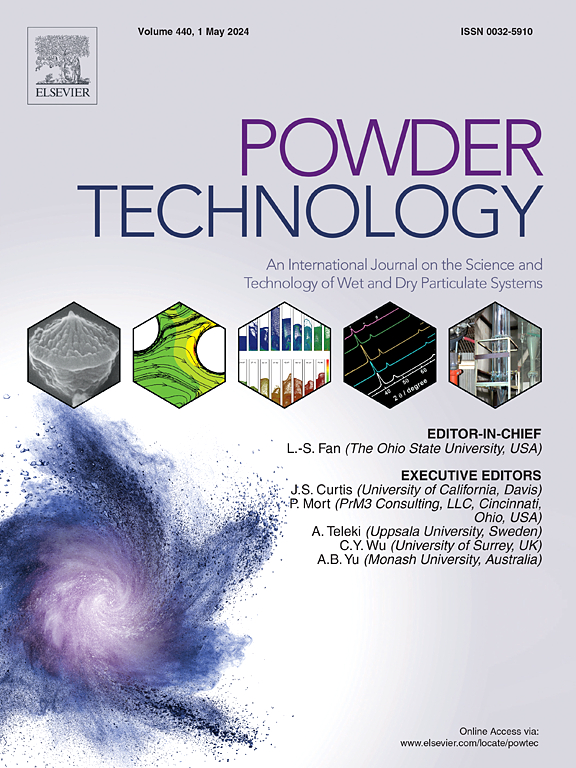Fragment tracking for microparticle breakage resulting from high-speed impacts
IF 4.5
2区 工程技术
Q2 ENGINEERING, CHEMICAL
引用次数: 0
Abstract
Particle breakage is of great interest within multiple engineering disciplines, as applications exist in powder production, industrial pipe flow, and aircraft engines. While important, not many measurement techniques exist to directly measure particle breakage. This work introduces an image-based measurement technique and algorithm that detects breakage and tracks resulting fragments for high-speed particles. This allows for the breakage probability (or selection function) to be measured directly by comparing the number of particles that bounce to the number of particles that break for a given impact condition. The presented algorithm is also shown to have an uncertainty of no more than . Moreover, resulting fragment velocities and angles are related to initial impact conditions and compared with corresponding particle bounce results. The breakage algorithm is demonstrated on experimental data consisting of sieved quartz incident on Grade 4 (commercially pure) titanium with speeds between and and a nominal angle of incidence of . It is demonstrated that the technique yields good results as groups of fragments resulting from particle breakage are shown to have the same average rebounding angle and a lower average rebounding velocity compared to particles that bounce. These findings underscore the improved particle breakage measurements that this new technique achieves.

求助全文
约1分钟内获得全文
求助全文
来源期刊

Powder Technology
工程技术-工程:化工
CiteScore
9.90
自引率
15.40%
发文量
1047
审稿时长
46 days
期刊介绍:
Powder Technology is an International Journal on the Science and Technology of Wet and Dry Particulate Systems. Powder Technology publishes papers on all aspects of the formation of particles and their characterisation and on the study of systems containing particulate solids. No limitation is imposed on the size of the particles, which may range from nanometre scale, as in pigments or aerosols, to that of mined or quarried materials. The following list of topics is not intended to be comprehensive, but rather to indicate typical subjects which fall within the scope of the journal's interests:
Formation and synthesis of particles by precipitation and other methods.
Modification of particles by agglomeration, coating, comminution and attrition.
Characterisation of the size, shape, surface area, pore structure and strength of particles and agglomerates (including the origins and effects of inter particle forces).
Packing, failure, flow and permeability of assemblies of particles.
Particle-particle interactions and suspension rheology.
Handling and processing operations such as slurry flow, fluidization, pneumatic conveying.
Interactions between particles and their environment, including delivery of particulate products to the body.
Applications of particle technology in production of pharmaceuticals, chemicals, foods, pigments, structural, and functional materials and in environmental and energy related matters.
For materials-oriented contributions we are looking for articles revealing the effect of particle/powder characteristics (size, morphology and composition, in that order) on material performance or functionality and, ideally, comparison to any industrial standard.
 求助内容:
求助内容: 应助结果提醒方式:
应助结果提醒方式:


